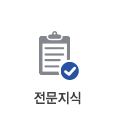목차
없음
본문내용
. They must be prepared to take independent action if necessary. The art of making sound decisions quickly lies in the knowledge of tactics, the estimate process, and platoon and squad techniques and procedures. The skills required of infantry leaders include physical toughness, technical knowledge, mental agility, and a firm grasp of how to motivate soldiers to fight on in the face of adversity.
1-4. SOLDIER SKILLS
Soldiers with sharply honed skills form the building blocks of combat effective squads and platoons. They must maintain a high state of physical fitness. They must be experts in the use of their primary weapons. They must be proficient in infantry skills (land navigation, camouflage, individual movement techniques, survival techniques, and so forth). Finally, they must know and practice their roles as members of fire teams, squads, and platoons.
1-5. TRAINING
Infantry units must train properly for combat. Training must conform to Army doctrine. Doctrinal manuals provide leaders correct procedures and principles to conduct training properly. Leaders and soldiers must understand standardized doctrinal principles found in applicable publications. They should refer to ARTEP 7-8-MTP to find the specific conditions and standards for the techniques and procedures discussed in this manual. Training must require unit leaders to use their initiative and make decisions quickly. The training environment must be realistic and stressful. Training must challenge soldiers to master all infantry tasks, individual and collective, and it must constantly remind them of their mission, their heritage, and the physical and mental toughness that is required of them, Platoon training must also promote the cohesion of the unit so that, when all else fails, units continue to fight.
1-4. SOLDIER SKILLS
Soldiers with sharply honed skills form the building blocks of combat effective squads and platoons. They must maintain a high state of physical fitness. They must be experts in the use of their primary weapons. They must be proficient in infantry skills (land navigation, camouflage, individual movement techniques, survival techniques, and so forth). Finally, they must know and practice their roles as members of fire teams, squads, and platoons.
1-5. TRAINING
Infantry units must train properly for combat. Training must conform to Army doctrine. Doctrinal manuals provide leaders correct procedures and principles to conduct training properly. Leaders and soldiers must understand standardized doctrinal principles found in applicable publications. They should refer to ARTEP 7-8-MTP to find the specific conditions and standards for the techniques and procedures discussed in this manual. Training must require unit leaders to use their initiative and make decisions quickly. The training environment must be realistic and stressful. Training must challenge soldiers to master all infantry tasks, individual and collective, and it must constantly remind them of their mission, their heritage, and the physical and mental toughness that is required of them, Platoon training must also promote the cohesion of the unit so that, when all else fails, units continue to fight.
추천자료
 [과외]중학 영어 2-1기말 출판사공통 예상문제 18
[과외]중학 영어 2-1기말 출판사공통 예상문제 18 Reading for the Real World 2 -UNIT 10 : NELSON MANDELA`S FIGHT (교양영어, UNIT 10. 넬...
Reading for the Real World 2 -UNIT 10 : NELSON MANDELA`S FIGHT (교양영어, UNIT 10. 넬... 2012학년도 4분기 영어교실 일일지도안 : 방과후학교 특기적성교육 - (B3,C1)반 교수학습지도...
2012학년도 4분기 영어교실 일일지도안 : 방과후학교 특기적성교육 - (B3,C1)반 교수학습지도... 상황별 비즈니스기초영어회화 02 - Unit 1.At the Airport
상황별 비즈니스기초영어회화 02 - Unit 1.At the Airport Case by Case 비지니스 영어회화 - 비즈니스 영어회화의 의미, 필요성, 특징, 기법
Case by Case 비지니스 영어회화 - 비즈니스 영어회화의 의미, 필요성, 특징, 기법 군사영어 ; Unit 14. Communication -Reading Text
군사영어 ; Unit 14. Communication -Reading Text Unit 19. Offense - Reading Text
Unit 19. Offense - Reading Text 군사영어 ; Unit 3. Squad Drill - Reading Text
군사영어 ; Unit 3. Squad Drill - Reading Text 군사영어 ; Unit 12. - Reading Text
군사영어 ; Unit 12. - Reading Text





























소개글